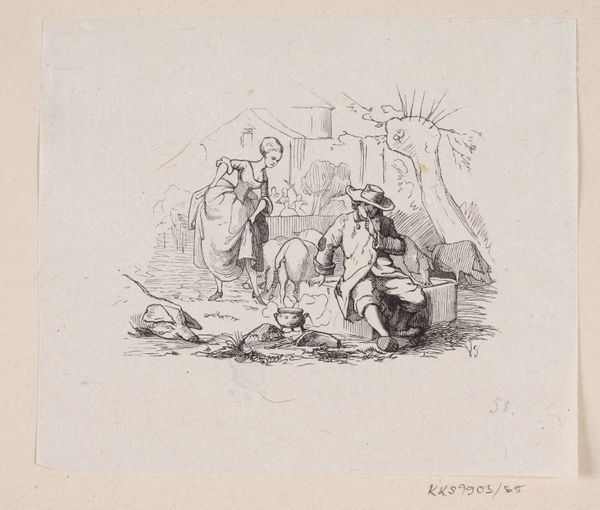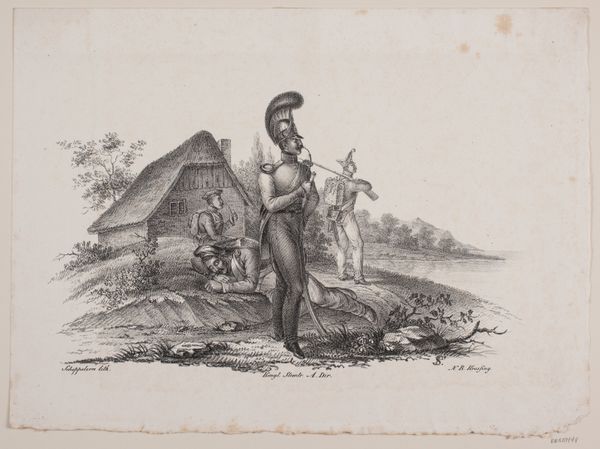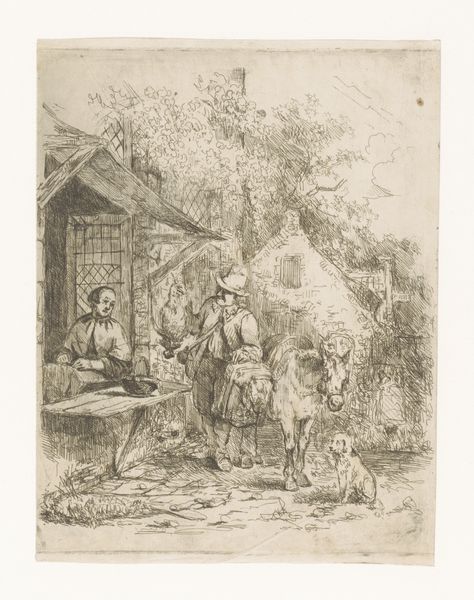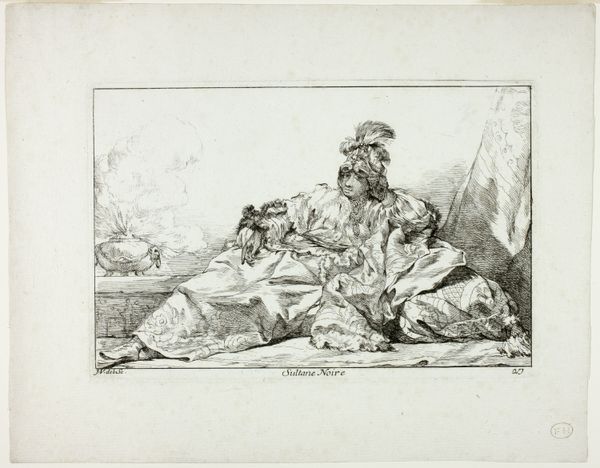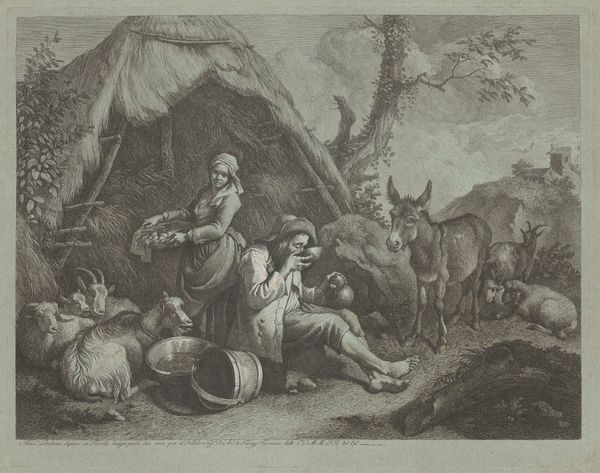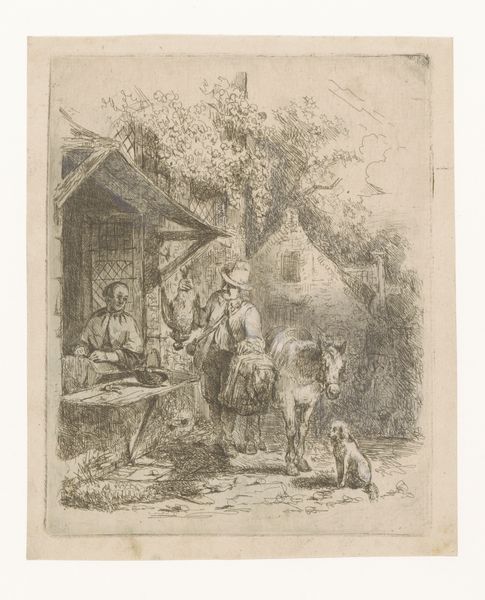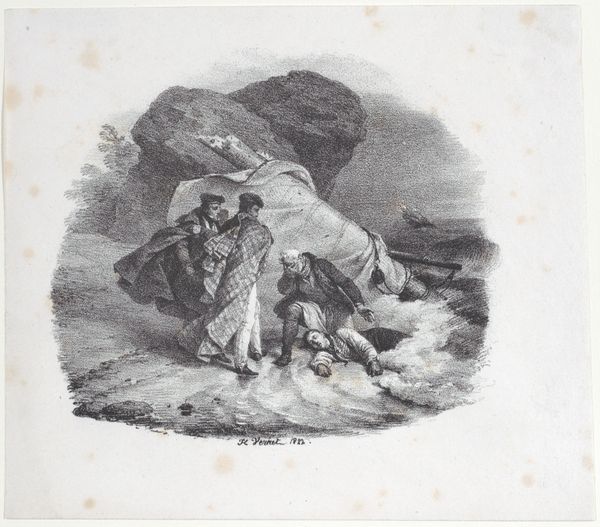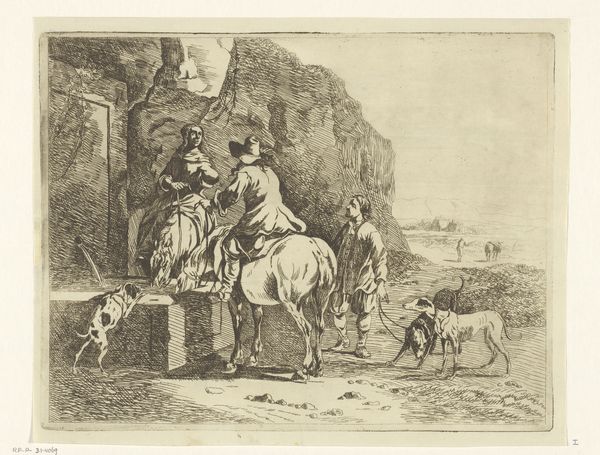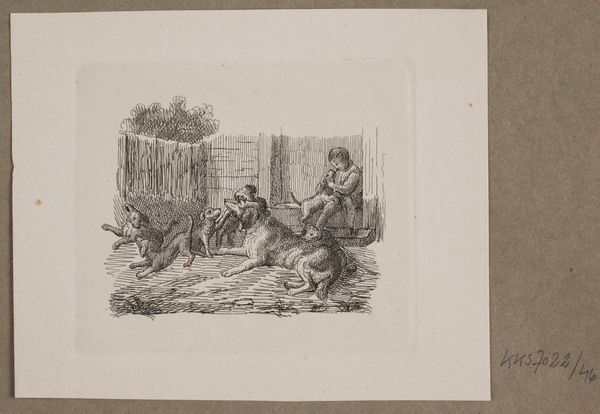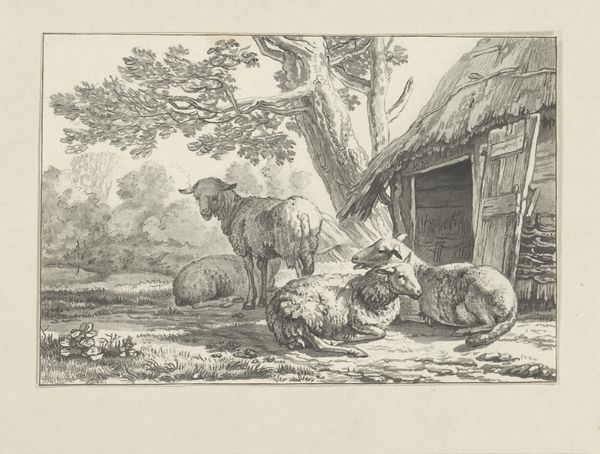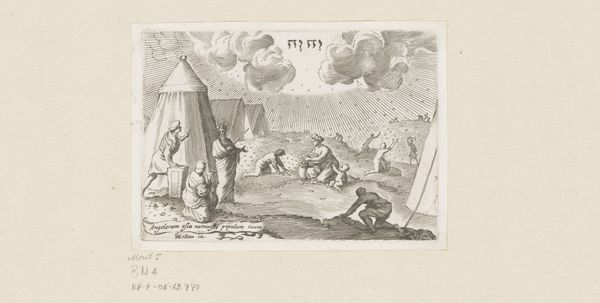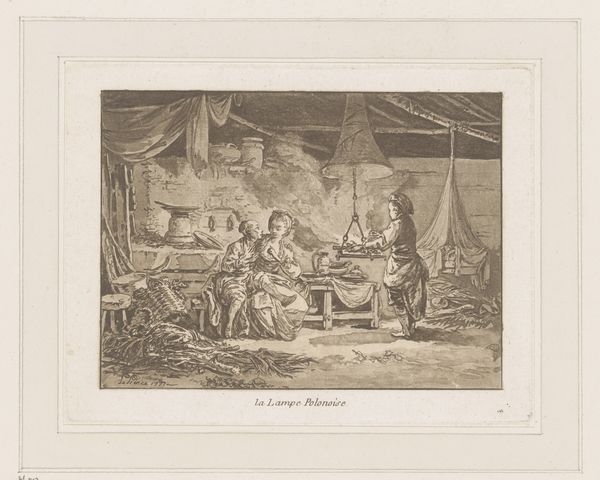
print, engraving
# print
#
old engraving style
#
genre-painting
#
engraving
#
realism
Dimensions: height 101 mm, width 62 mm
Copyright: Rijks Museum: Open Domain
Curator: This print, known as "Fotoreproductie van Der Fischmarkt," offers a fascinating glimpse into a 19th-century fish market, probably dating from around 1870 to 1900. Editor: It has a melancholic air, doesn't it? Somber even, despite the supposed hustle and bustle of a marketplace. I am immediately drawn to the intricate details despite the scene feeling static. Curator: Yes, it is interesting how they manage to get this look by working the print. It's an engraving, of course. You can see how the engraver meticulously worked the plate to create the dark tones and fine lines. Look closely at how the clothing, and in particular, the way the scales of the fish glimmer. Editor: Thinking of the artist’s labor... It's compelling how this anonymous print captures the energy – or the exhaustion – around these trades. It points to how critical these marketplaces were for feeding communities. Did most of the people who made prints like this consider themselves "artists," or laborers fulfilling the demands of image circulation? Curator: Both, perhaps? There's clearly an artistic sensibility at play, the way the composition guides our eye, drawing our attention to the figures clustered around the basket of fish, yet it also served a very practical purpose: disseminating information about everyday life and potentially romanticizing those events. Look at the small child sitting on the base of the wagon - he appears to be playing with some wood scraps. Editor: That is a nice addition, a certain poignancy contrasting the work of all those other workers. It makes one think about the lives that weren’t available to those born into that life, or even of that child inheriting those exact functions. Curator: It’s a somber thought indeed, and speaks to the broader narrative of social realism that became quite popular in portraying everyday life. I suspect it captures the human condition and offers it for wider viewership. Editor: True enough. By concentrating on a print from the end of the nineteenth century, we get insight into a certain kind of making, the commodification of artistic production, and how we have come to see the work of art itself, and the labor it required. Curator: It’s almost haunting. I find that perspective illuminating.
Comments
No comments
Be the first to comment and join the conversation on the ultimate creative platform.

